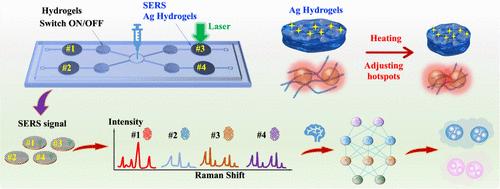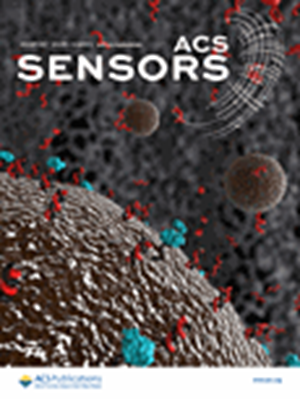Neural Network-Assisted Dual-Functional Hydrogel-Based Microfluidic SERS Sensing for Divisional Recognition of Multimolecule Fingerprint
IF 8.2
1区 化学
Q1 CHEMISTRY, ANALYTICAL
引用次数: 0
Abstract
To enhance the sensitivity, integration, and practicality of the Raman detection system, a deep learning-based dual-functional subregional microfluidic integrated hydrogel surface-enhanced Raman scattering (SERS) platform is proposed in this paper. First, silver nanoparticles (Ag NPs) with a homogeneous morphology were synthesized using a one-step reduction method. Second, these Ag NPs were embedded in N-isopropylacrylamide/poly(vinyl alcohol) (Ag NPs-NIPAM/PVA) hydrogels. Finally, a dual-functional SERS platform featuring four channels, each equipped with a switch and a detection region, was developed in conjunction with microfluidics. This platform effectively allows the flow of the test material to be directed to a specific detection region by sequential activation of the hydrogel switches with an external heating element. It then utilizes the corresponding heating element in the detection region to adjust the gaps between Ag NPs, enabling the measurement of the Raman enhancement performance in the designated SERS detection area. The dual-functional microfluidic-integrated hydrogel SERS platform enables subregional sampling and simultaneous detection of multiple molecules. The platform demonstrated excellent detection performance for Rhodamine 6G (R6G), achieving a detection limit as low as 10–10 mol/L and an enhancement factor of 107, with relative standard deviations of the main characteristic peaks below 10%. Additionally, the platform is capable of simultaneous subarea detection of four real molecules─thiram, pyrene, anthracene, and dibutyl phthalate─combined with fully connected neural network technology, which offers improved predictability, practicality, and applicability for their classification and identification.

求助全文
约1分钟内获得全文
求助全文
来源期刊

ACS Sensors
Chemical Engineering-Bioengineering
CiteScore
14.50
自引率
3.40%
发文量
372
期刊介绍:
ACS Sensors is a peer-reviewed research journal that focuses on the dissemination of new and original knowledge in the field of sensor science, particularly those that selectively sense chemical or biological species or processes. The journal covers a broad range of topics, including but not limited to biosensors, chemical sensors, gas sensors, intracellular sensors, single molecule sensors, cell chips, and microfluidic devices. It aims to publish articles that address conceptual advances in sensing technology applicable to various types of analytes or application papers that report on the use of existing sensing concepts in new ways or for new analytes.
 求助内容:
求助内容: 应助结果提醒方式:
应助结果提醒方式:


